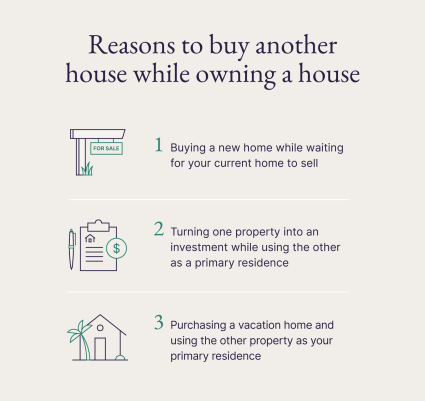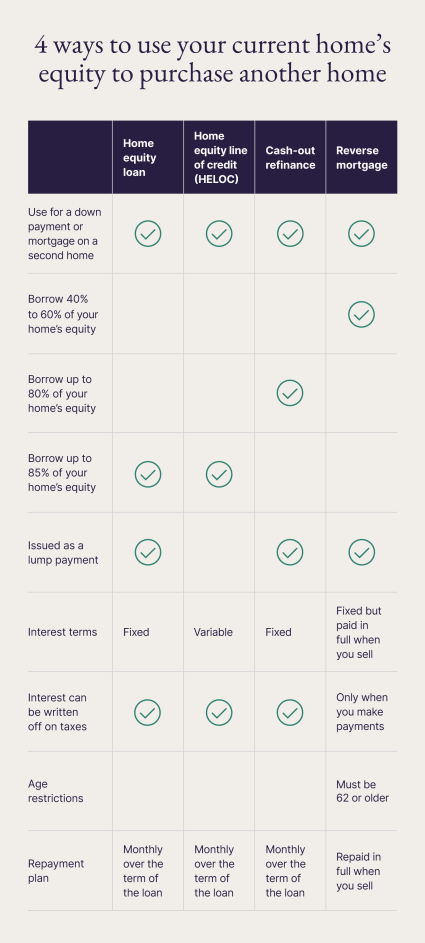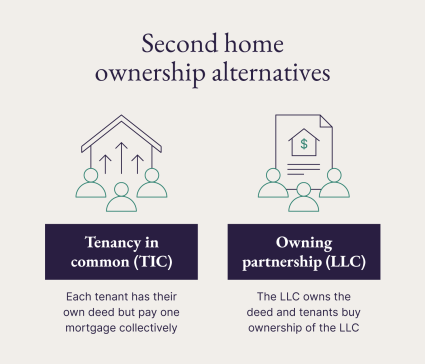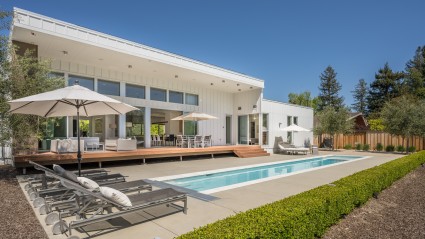31 most popular types of houses and structures in 2025
Ever found yourself drawn to a house but unable to pinpoint why? Residential architecture boasts a wide array of styles, each with distinct, often subtle, differences. For many, identifying various house types, like distinguishing a Colonial from a Craftsman, can feel like breaking a code. However, understanding this architectural language isn't merely academic; it's essential for envisioning your ideal living space, whether it's your first or your This isn't just a list. It's an exploration into the fundamental characteristics that define each house style. We're moving beyond superficial appearances to reveal the core features that shape their unique identities. This insight will help you understand how historical influences mold design and enable you to match an architectural style to your lifestyle. Types of house structures Before we get to the different types of houses, it can be helpful to know the common types of home structures. Knowing whether you want a single-family home or a condo can narrow down your search and make it easier to find something that suits your budget and lifestyle. Single-family detached A single-family home is a structure that is not physically attached to other houses. These homes offer the highest degree of privacy and customization by the owner. They are most popular in areas with lower population densities. These house types are best for families wanting space and a yard, but not ideal for those preferring an urban, low-maintenance lifestyle. Mansion A Mansions are ideal for those wanting ultimate richness and privacy, but they're not suitable for people who prefer low maintenance or city living.
Apartment An apartment is a residential unit contained within a larger building or complex. An apartment is only available for renting and requires a contractual agreement with the landlord. Some apartment buildings provide amenities such as pools and fitness rooms. Apartments are best for individuals or small families seeking flexibility and affordability, but aren't ideal for those desiring privacy, a yard or extensive customization. Row house A row house is a single-family home connected to others by shared side walls, usually with multiple stories. Compared to apartments, row houses offer more space and often a small private outdoor area, but they offer less privacy than detached homes. Row houses are ideal for those wanting a blend of city living and a bit more room, but not for people seeking large private land, complete detachment from neighbors or a fully maintenance-free life. Condominium A condominium, or condo for short, is an apartment-like unit that is owned by an individual. The owner can make renovations and rent out the unit so long as they do not violate the rules of the homeowners' association (HOA). Condominiums are great for those wanting homeownership with less maintenance and a convenient location. However, they're not ideal if you need lots of privacy, a big yard or freedom from HOA rules and fees. Co-op A housing cooperative, more commonly known as a co-op, has many similarities to a condominium but with more restrictions. Instead of purchasing a specific unit within the building, the buyer is purchasing shares in the company that owns the building. The number of shares the person owns translates to the size of their unit. This type of house is best for people who want a strong community and affordable access to good city areas. However, it's not for those who need total control over their property or fewer rules about how they live. Townhome A townhome is a private unit that is attached to at least one other private unit. It usually has exterior access and multiple stories for added space. Townhomes sometimes provide access to shared building amenities. These are increasingly diverse in style, often incorporating elements of modern farmhouse and contemporary styles, and are some of the These styles of houses are ideal for individuals seeking more space and a private entrance, rather than an apartment. However, if you're looking for complete detachment from neighbors or no HOA fees, another home type may be a better fit. Coach home Coach houses, sometimes called carriages, were originally used to house horse-drawn carriages and were converted to be private dwellings. Now, a coach house can refer to any detached unit on the same property as another building. They can be rented out by the property owner of the main house or owned by a second individual. Coach houses are ideal for individuals wanting a detached home with less upkeep than a larger house and potential rental income. However, they're not great for those seeking a large yard or someone who wants full independence from the main property. Chalet A chalet is the traditional house of shepherds in Switzerland. Today, the term refers to a Winter sports lovers and families wanting a cozy mountain getaway will love a chalet. However, it's not for those who prefer warm weather, flat areas or dislike being isolated. Cabin A cabin is a type of single-family structure defined by its minimalist features and rustic design. It is often used as a vacation residence but can also be a primary dwelling. Cabins are almost always located in remote areas. This home is great for nature lovers and those wanting peace and quiet. However, it's not ideal for people who need easy access to amenities or prefer a social city setting, as they might find it too isolated or uncomfortable. Tiny house A tiny home is usually considered to be any home under 400 square feet. Tiny homes were inspired by the modern trend of people downsizing their possessions and financial burdens. Tiny homes are best suited for minimalists and budget-conscious individuals who value financial freedom and a smaller environmental footprint. However, they are not ideal for families needing significant space or individuals who prioritize privacy and traditional amenities.
Mobile home A mobile home is a factory-built house that can be towed to a lot for a semi-permanent residence. The mass-produced nature of mobile homes makes them an affordable option for home buyers. Mobile homes are often affordable options for people seeking homeownership and a community feel. This type of house may not be ideal for people prioritizing rapid property appreciation, extensive privacy or freedom from community rules.
Modular home A modular home has different sections that are fabricated in a factory. The sections are then shipped to the build site and assembled atop the foundation. Unlike mobile homes, modular homes are permanently affixed to real estate and built according to local and state building codes as traditional site-built homes. Modular homes are an excellent choice for budget-conscious buyers seeking faster construction and high-quality, factory-controlled builds. On the other hand, they might not suit those wanting extreme customization or extensive involvement in the on-site building process.
Types of houses by architectural style Now that you know the different structures that can make up a home, it’s time to dive into the different house style names and architecture styles you’ll likely come across. When we talk about house styles, we’re referring to the exterior aesthetics of each house and some of its practical functions. As you examine the different style homes available, take note of what is beneficial for the area you live in, versus what is simply decorative, as this can drive costs up unnecessarily. For example, while a home with tall ceilings and lots of windows may be great for hot climates, it’s going to raise heating costs in areas with harsh winters. For those especially passionate about design, you might enjoy exploring some Victorian The Victorian house style came to prominence in the 1830s — during Queen Victoria’s reign — and continued into the early 1900s. These homes are quite large, usually two to three stories tall. This type of house is known for its ornate wooden exterior with gabled roofs and turrets. Defining features: Tudor The Tudor house style came to America in the late 1800s and remained popular into the 1930s. Tudor homes often evoke feelings of an English country manor. They were inspired by medieval architectural elements and incorporated masonry, timber framing and narrow windows. Defining features: Farmhouse The Farmhouse style is known for its warm and cozy aesthetics. It typically employs hand-hewn beams and wrought iron hardware over a rectangular design. Farmhouse-style homes often have wood flooring, clapboard siding, and contrasting shutters. Some even mimic barn roofs, evoking a charming Defining features: Modern Farmhouse Modern Farmhouse homes blend traditional Farmhouse elements with the sleek, clean lines of contemporary design, resulting in warmth, simplicity and functionality. The style is characterized by natural textures and materials, especially wood and galvanized steel. Color schemes lean toward cream with black trim and fittings, though bolder hues are also used. Defining features: French Country As the name suggests, French Country-style houses take inspiration from homes found in areas like Provence, France. These types of homes share traits with the Farmhouse style by incorporating distressed wood, subdued color palettes and window shutters. They differ in their stone exterior and fireplace. Defining features: Mid-Century Modern Mid-Century Modern style is all about simplicity, with clean lines, organic and geometric shapes, floor-to-ceiling windows and minimal decoration. Made popular after World War II, Mid-Century Modern design puts function front and center. This type of home also aims to complement the surrounding environment. Defining features: Tuscan/Mediterranean The Tuscan style is a natural fit for areas that mix indoor and outdoor living. It looks particularly fitting in the rolling hills of wine country and sunny Southern California. These kinds of houses feature detailed stonework, lavish balconies with wrought iron railings, terracotta tiles, textured walls and stucco façades. Defining features: Ranch Ranch houses first popped up in the 1930s and hit their peak in the 1950s. They are known for open living spaces and low-pitched roofs, rarely being taller than one story. Since these homes hit the market during the suburban boom, they often have an attached garage for commuters and a large backyard. Defining features: Split-Level The Split-Level house style is an offshoot of the Ranch style that became popular in the 1950s and 1960s. Its main difference is that it contains multiple stories connected by short flights of stairs. Defining features: Bungalow The British elite first constructed bungalow houses in the 19th century as simple rest houses. This affordable style was adopted all over America in the 20th century, with offshoots popping up in Chicago, California and Michigan. Bungalow homes are known for their column-supported roofs, large main floors and stone elements, making them a charming option for those considering Defining features: Cottage Cottage houses were first built by working-class English farmers before this type of home was first brought to America. Now, they are ideal vacation homes due to their tight quarters, creating a cozy atmosphere and requiring little maintenance. They can be identified by their wood or wood shingle siding and small front porches. Defining features: Art Deco Art Deco is one of the most visually distinct types of homes in this list. Like Mid-Century Modern and Cottage, this style can also be applied to certain Defining features: Colonial The Colonial house style in America dates back to the 1600s and draws from English, French, Georgian, Dutch and Spanish influences. These homes are at least two stories tall and have a rectangular frame. They have a symmetrical façade with evenly spaced windows. It is also common for them to have a decorative crown over the entryway that is supported by columns. Defining features: Cape Cod Defining features: Craftsman The Craftsman style is one of the quintessential American house styles, representing a rebellion against the mass-produced homes in modern developments. These houses are handmade and built to stand the test of time. Each one is unique since they are designed according to the specifications of the owner. Some common traits include built-in shelves, custom fireplaces, and reading nooks. Defining features: Greek Revival The Greek Revival style arose during the 1800s when people found inspiration in ancient Greek culture. This translated to buildings emulating traits of historic structures like the Parthenon. These types of houses in America had large wood columns that were covered in white plaster to mimic stone. Defining features: Prairie The Prairie house style is a uniquely American creation. Architects created these types of houses to break away from the traditional European styles of the time. With its heavy reliance on horizontal lines and desire to complement natural surroundings, it can be seen as a precursor to the mid-century modern style. Defining features: Contemporary The Contemporary style refers to homes that are presently being built and do not fall under a previously defined style. They sometimes share elements with modernist styles — such as clean lines — but will also appeal to current trends, like utilizing eco-friendly materials. Defining features: Find your ideal home with Pacaso Now that you know the types of houses you’re likely to come across during your house hunt, you can narrow your search down to the styles you find most inspiring and practical for your needs. If you’re currently in search of a
Read












